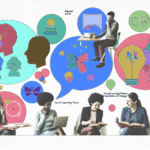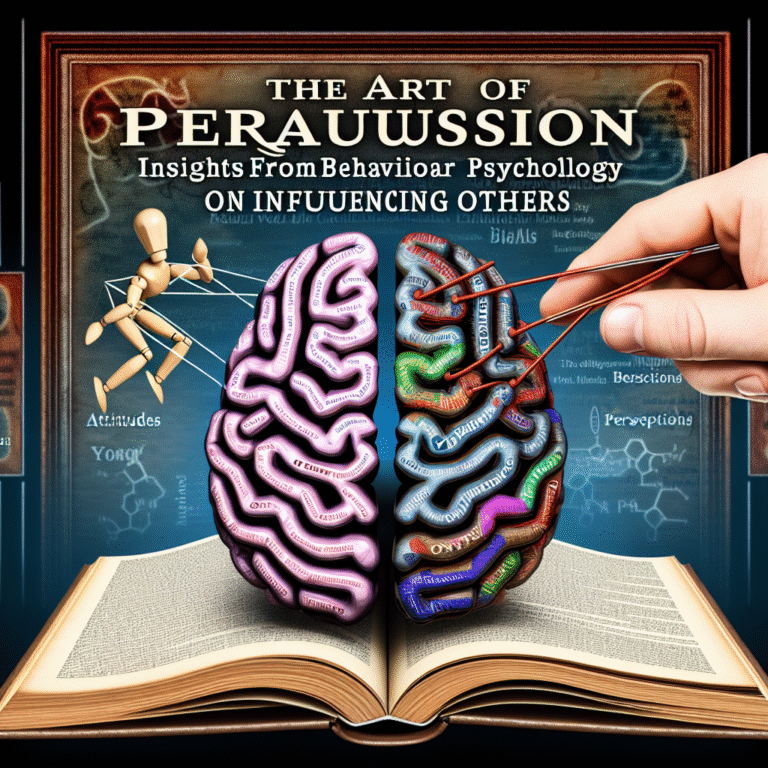
The Ultimate Guide to The Science of Workplace Engagement: Behavioral Psychology Insights for Leaders
Introduction
In the fast-paced world of modern business, where productivity is paramount and employee retention is at an all-time low, the significance of workplace engagement cannot be overstated. The Science of Workplace Engagement: Behavioral Psychology Insights for Leaders examines the intricate behaviors and motivations that dictate how engaged employees feel at work. Engaged employees are not just physically present; they are emotionally and mentally invested in their work. This article explores the tools and insights leaders can use to create a thriving work environment, informed by behavioral psychology principles.
Understanding Workplace Engagement
Workplace engagement is about more than just employee satisfaction or morale; it encompasses the emotional commitment to organizational goals and values. Gallup’s research indicates that actively disengaged employees cost businesses between $450-$550 billion annually in the U.S. alone. Conversely, organizations with high engagement scores outperform their competitors in productivity and profitability.
The Psychological Foundation
Behavioral psychology offers valuable insights into what drives employee engagement. It posits that behavior is a function of the person and their environment, and understanding this interplay allows leaders to foster a more engaging workplace.
- Intrinsic vs. Extrinsic Motivation: Employees can be motivated by internal drives (intrinsic) or external rewards (extrinsic). Leaders should aim to cultivate intrinsic motivation through:
- Autonomy: Empowering employees to make decisions.
- Mastery: Providing opportunities for skill development.
- Purpose: Connecting tasks to the larger company vision.
Case Study: Google’s 20% Time
Google’s legendary 20% time policy allows employees to spend 20% of their work hours on projects that interest them. This initiative epitomizes the principles of intrinsic motivation and has led to revolutionary products like Gmail and Google News. By fostering an environment where employees feel they have control over their work, Google has effectively enhanced engagement.
The Role of Communication in Engagement
Effective communication is vital in building workplace engagement. It facilitates transparency, fosters trust, and enhances team cohesion. Leaders must prioritize open channels of communication, encouraging feedback and dialogue.
Active Listening Techniques
Leaders should practice active listening to show employees their contributions are valued. This means:
- Providing undivided attention during conversations.
- Asking clarifying questions.
- Reflecting back what was said to confirm understanding.
Case Study: Starbucks’ Employee Feedback Loop
Starbucks has implemented an employee feedback tool that allows baristas to share their thoughts on workplace practices directly with management. This initiative shows how listening can lead to actionable changes and heightened employee engagement levels.
The Impact of Recognition on Engagement
Recognition is a powerful driver of employee engagement. Behavioral psychology suggests that positive reinforcement strengthens desirable behaviors, motivating employees to embrace their roles more fully.
Types of Recognition
- Formal Recognition: Award ceremonies or performance bonuses.
- Informal Recognition: Simple thank-you emails or shout-outs during meetings.
Case Study: Zappos’ Customer Service Awards
Zappos, known for its customer service, has a unique recognition program where employees can nominate fellow employees for awards. This not only boosts morale but also enhances team spirit, embodying the essence of The Science of Workplace Engagement: Behavioral Psychology Insights for Leaders.
Creating a Supportive Work Environment
An engaging workplace is one where employees feel supported both professionally and personally. This means providing resources for mental health, ensuring work-life balance, and promoting team collaboration.
Psychological Safety
Leaders must create an environment of psychological safety where employees feel secure in expressing themselves without fear of negative consequences. Tactics for fostering psychological safety include:
- Encouraging innovation and experimentation.
- Supporting team members in sharing failures as learning opportunities.
Case Study: Adobe’s Check-In Program
Adobe’s Check-In program replaces traditional performance reviews with ongoing feedback conversations focused on employee strengths and areas for growth. This initiative fosters a culture of continuous improvement, reinforcing engagement through mutual support.
Leveraging Data to Enhance Engagement
The collection and analysis of employee engagement data can provide actionable insights for leaders. Regularly conducted engagement surveys can help identify areas needing improvement.
Tools for Measuring Engagement
- Engagement Surveys: Tools like Gallup Q12 can act as benchmarks for measuring engagement across various aspects of the work environment.
- Pulse Surveys: Quick, periodic check-ins that gauge employee sentiment in real time.
Case Study: Microsoft’s Data-Driven Approach
Microsoft employs extensive data analytics to evaluate employee engagement across its global offices. By analyzing survey results, management can identify trends and make informed decisions that align directly with the principles of The Science of Workplace Engagement: Behavioral Psychology Insights for Leaders.
Building a Culture of Continuous Improvement
Engagement is not a one-time effort; it requires continual nurturing and adaptation. Leaders must create a culture of continuous improvement by regularly revisiting engagement strategies and being open to change.
Implementing Agile Practices
Agile methodologies promote flexibility and quick adaptation, allowing teams to respond to changes and feedback rapidly. This can lead to improved team dynamics and higher engagement levels.
Case Study: Toyota’s Lean Management
Toyota’s Lean management philosophy emphasizes continuous improvement (Kaizen) and employee involvement. By encouraging employees to contribute ideas for process improvements, Toyota enhances engagement while driving efficiency.
Conclusion
The Science of Workplace Engagement: Behavioral Psychology Insights for Leaders offers a framework for understanding and improving employee engagement. By embracing behavioral psychology principles, leaders can make strides towards fostering a work environment where employees feel motivated, recognized, and supported. Emphasizing communication, recognition, psychological safety, data analytics, and a culture of continuous improvement paves the way for sustained engagement.
Inspired leaders who apply these insights will not only improve workplace productivity and satisfaction but also cultivate a robust organizational culture that attracts and retains top talent.
FAQs
1. What is workplace engagement?
Workplace engagement refers to the level of enthusiasm and commitment employees have towards their jobs and the organization. Engaged employees are motivated and actively work to contribute to the organization’s success.
2. How can I measure employee engagement?
You can measure employee engagement through surveys, feedback tools, and performance metrics. Regular engagement surveys and pulse surveys can provide valuable insights into employee sentiments.
3. What are some effective ways to improve employee engagement?
Effective ways include enhancing communication, recognizing employee contributions, providing opportunities for growth, fostering psychological safety, and promoting a supportive work environment.
4. How does recognition impact employee engagement?
Recognition serves as a form of positive reinforcement, motivating employees to remain engaged and perform at their best. It validates their contributions and encourages a culture of performance excellence.
5. Why is psychological safety important for engagement?
Psychological safety allows employees to speak up, take risks, and share ideas without fear of negative consequences. This environment of trust fosters innovation and keeps engagement levels high.
By understanding and applying The Science of Workplace Engagement: Behavioral Psychology Insights for Leaders, organizational leaders can create a transformative impact on their workplace culture, ultimately leading to a more productive and satisfied workforce.














